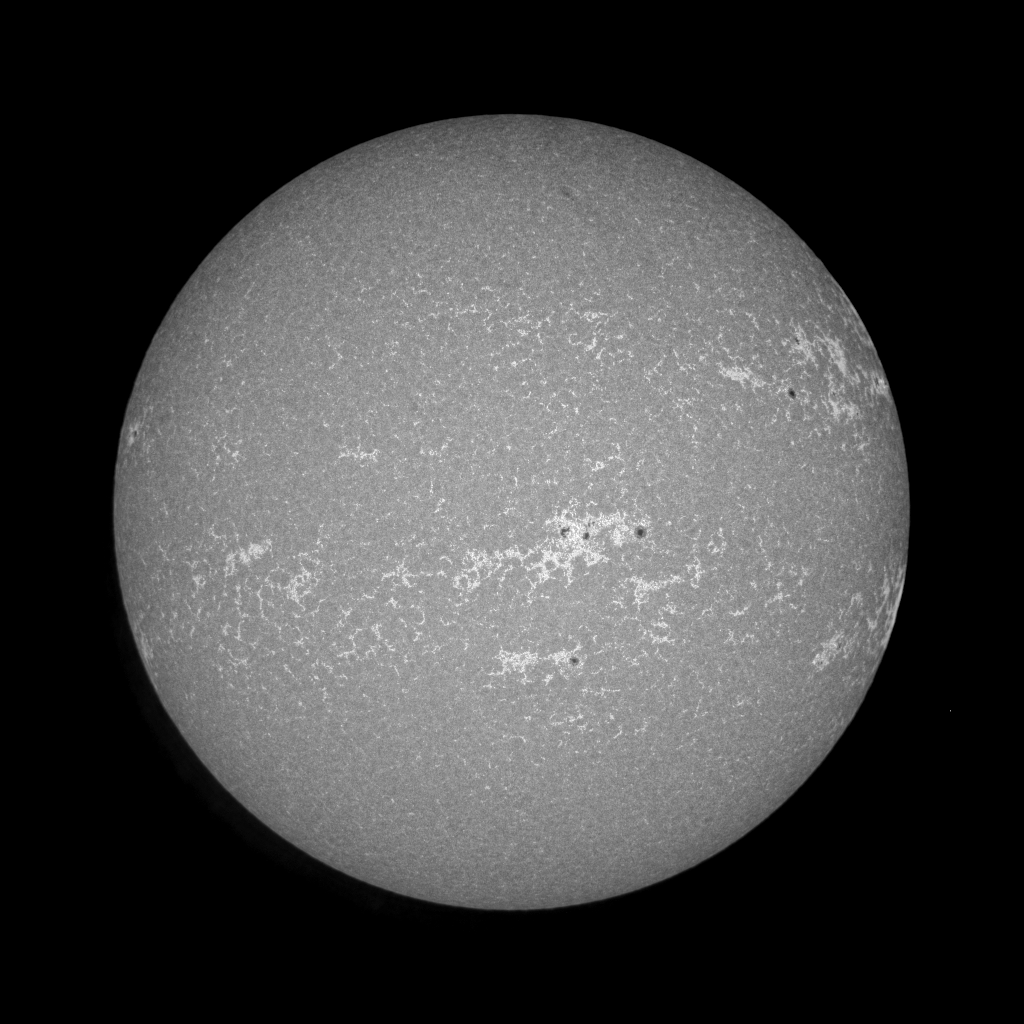This IC443, The Jellyfish Nebula in Gemini, imaged a couple
of nights ago.
IC 443 (also known as Sharpless 248 (Sh2-248)) is a galactic
supernova remnant in the constellation Gemini, roughly 5,000 lightyears from
Earth, and is one of the best-studied cases of supernova remnants interacting
with surrounding molecular clouds.
The remnant's age is still uncertain, although there is some
agreement that the supernova happened between 3,000 and 30,000 years ago.
IC 443 is an extended source, having an angular diameter of
50 arcmin (by comparison, the full moon is 30 arcmin across). At the estimated
distance of 5,000 lightyears from Earth, it corresponds to a physical size of
roughly 70 light years across.
This image is comprised of 36x300sec exposures through a
Hydrogen-Alpha filter, representing 3 hours of total exposure.
Stacked and processed in PixInsight, with final contrast
adjustments in Photoshop.
If the weather behaves, I will try and get the Sulphur and
Oxygen emissions and combine into a colour rendition.
PS.
I manage to get the additional Sii and Oiii data so I could
add colour to my mono image of last week. As it turns out, there is very little
Oiii emissions from this particular nebula so there is not much in the blue
channel. The nebula is very strong in Ha and Sii so, in visible colours, it is
a predominantly orangey-ochre colour. To lift the colours a bit, I combined the
narrowband data with One Shot Colour data that I captured back in 2013, so I
could show the stars in their natural colours.
Anyway, all in all, just under 10hours of total integration
time, plus Darks, Flats and Bias frames.





